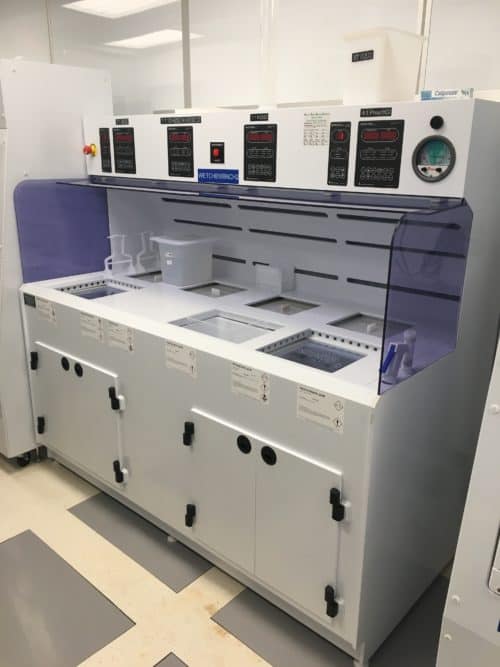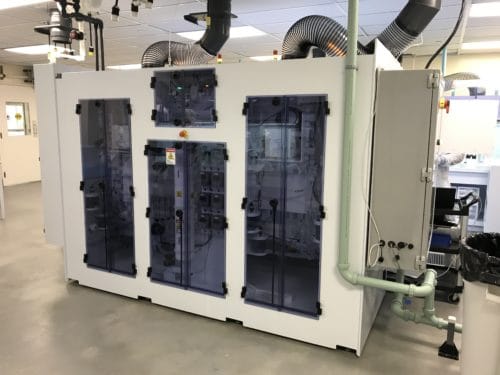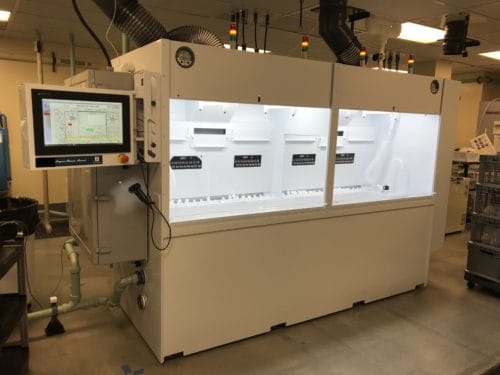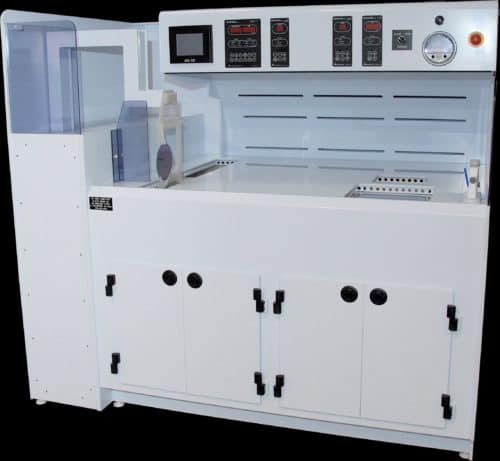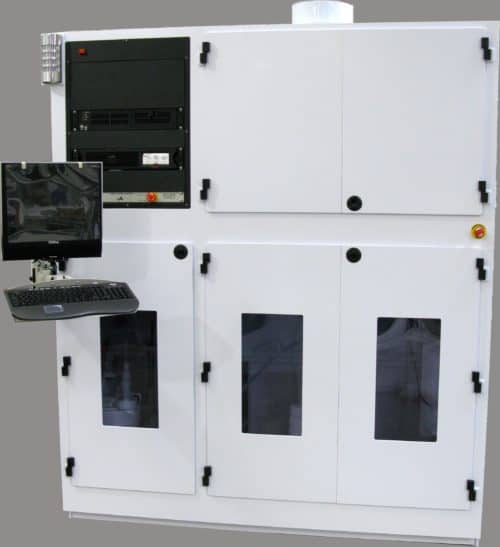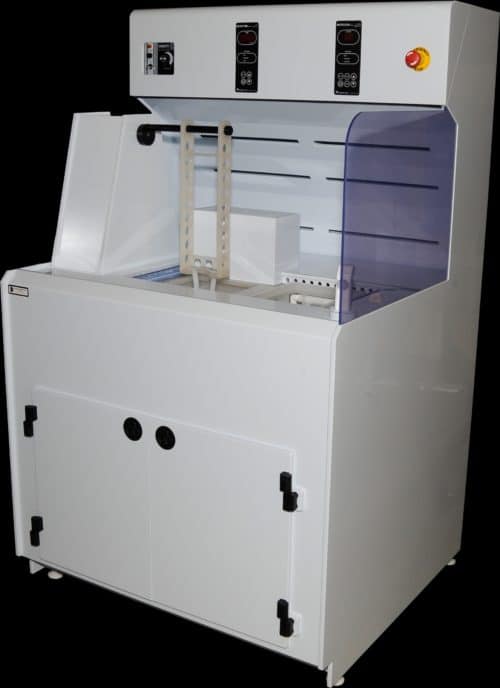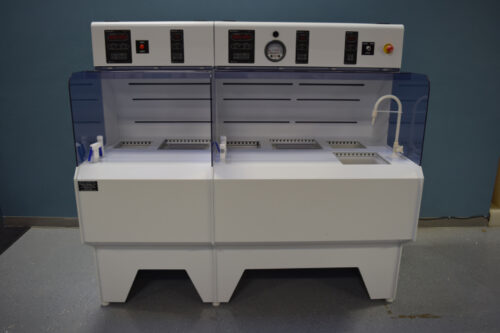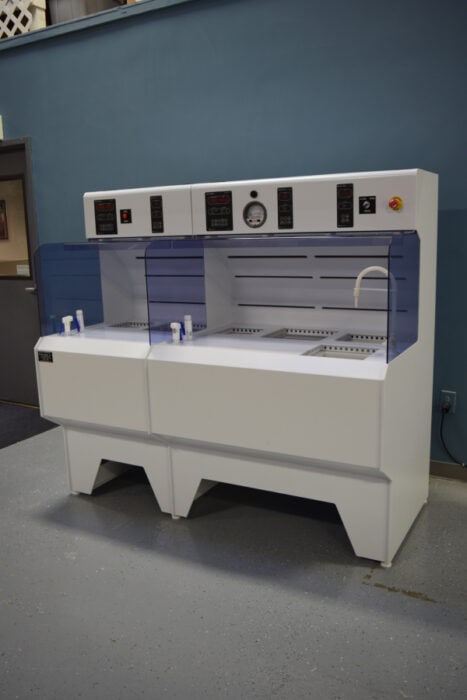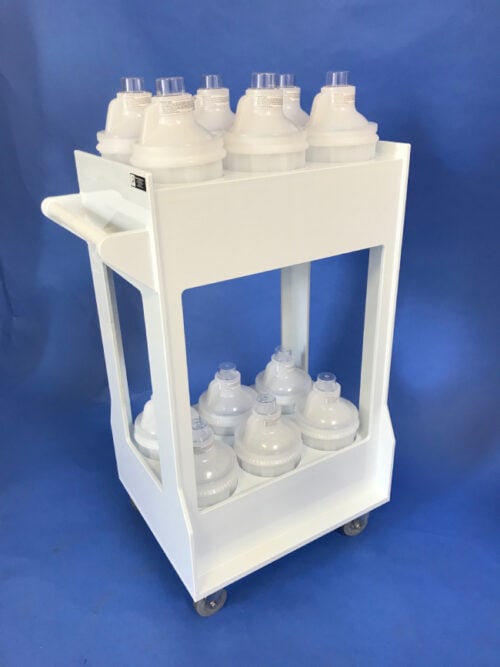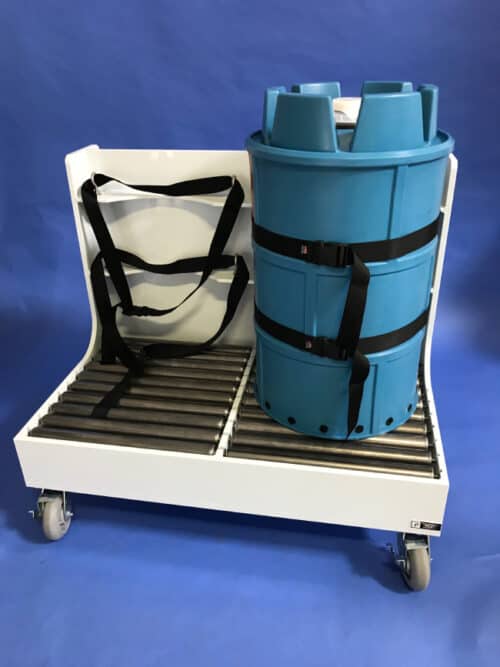Wet process stations and related equipment carry out multiple tasks in semiconductor manufacturing operations, with applications ranging from distributing and cleansing materials to mechanical spinning, polishing, etching, and silicon ingot forming. When processing or producing semiconductor wafers, for example, manufacturers often rely on wet process equipment like baths, rinse tanks, systems for chemical delivery, and fume hoods from a dependable supplier.
Wet processing equipment continues to improve accuracy and efficiency in this market as technology advances. Since 1976, Plastic Design, Inc. has collaborated with customers in industries like semiconductor manufacturing to develop and build custom, innovative solutions for clients’ operational and equipment challenges. Learn more about wet process equipment, the types and materials we offer, and how well-engineered equipment from Plastic Design, Inc. can benefit your business.
What Is Wet Process Equipment?
This type of equipment exclusively handles liquid chemical procedures in semiconductor production operations. Utilizing substances like solvents and acids, such processes might include plating, etching, part cleaning, and surface preparation. Wet process equipment like stations and benches lend multiple benefits to semiconductor manufacturing operations, the most significant of which is the strict control it gives them over temperature, chemical reactions, and timing. By managing these factors with the utmost precision, it allows electronics manufacturers to decrease the defect rate in semiconductor production, supporting higher quality in end products.
Types of Wet Process Equipment
Depending on your needs and budget, there are several wet processing equipment varieties available for semiconductor manufacturing. These include:
- Automated wet processing equipment. These machines operate automatically and efficiently utilizing turnkey programmable logic controllers (PLCs). They feature rinsers, baths, and cleaners that allow for optimal process control.
- Semi-automated equipment. This equipment incorporates both manual and automated functionality, combining increased process control with cost-effectiveness.
- Manual wet processing equipment. For low-volume production, smaller businesses, and operations looking for economical solutions, manual wet processing equipment is an ideal option.
- Plating equipment. Engineered for specific applications, plating equipment is effective in both electrolytic and electroless plating tasks.
- Chemical handling equipment. Machines like chemical dispensing units (CDUs) efficiently supply chemicals in controlled, precise amounts or assist in chemicals’ safe disposal.
- Bottle washer equipment. Bottle washers effectively clean various types of bottles to ensure sanitary operations.
Materials for Wet Process Equipment
Wet processing equipment is compatible with multiple types of materials, such as:
- FM-approved chlorinated polyvinyl chloride (PVC-C). PVC-C combines chemical resistance and durability for various wet processing applications.
- Stainless steel. This strong, highly durable metal offers superior robustness along with corrosion and impact resistance for creating lasting equipment.
- Polyethylene (PE). Whether it’s high-density polyethylene (HDPE), low-density polyethylene (LDPE), or ultra-high molecular weight polyethylene (UHMWPE), versatile PE plastic is an ideal material for applications requiring chemical and impact resistance or FDA approval.
- Polypropylene (PP). This low-density and -friction crystalline thermoplastic is another versatile and durable choice that resists high temperatures. It’s useful in many applications for being tough yet flexible.
- Polytetrafluoroethylene (PTFE). PTFE is useful for wet processing applications because of its nonreactivity and resistance to chemicals and water. Often referred to by the brand name Teflon®, this dense synthetic fluoropolymer is also known for its high thermal stability and versatility.
- Polyvinylidene fluoride (PVDF). PVDF is another nonreactive fluoropolymer that’s beneficial for its resistance to harsh chemicals and its high thermal stability. It’s ideal for high-purity applications and has a lower density than many other fluoropolymers.
- Polyvinyl chloride (PVC). This synthetic thermoplastic is lightweight yet durable, holding up well against chemicals and corrosion for long-term use. Highly versatile, it also offers excellent performance for its price.
Take the Next Step in Wet Process Semiconductor Excellence at Plastic Design, Inc.
Looking for the right semiconductor wet processing station for your manufacturing operation? Partner with an experienced equipment supplier with a background in your industry and the capabilities to meet your needs for performance and cost. In business for nearly half a century, Plastic Design, Inc. designs and custom-builds a complete wet process station line in compliance with today’s SEMI Standards.
Our ISO 9001:2015-certified company operates out of a 30,000-square-foot facility with an open manufacturing area of 21,000 square feet, where we manufacture a versatile array of wet process equipment solutions for semiconductor production and related applications. In addition, our product capabilities extend to clean room essentials, fume hoods, custom tanks, and lab furniture, with services including machining, fabrication, welding, and material distribution.
Contact us today, and we’ll connect you with one of our experts to help with wet process equipment design and manufacturing based on your unique requirements.






